Biblical Definition of Love
Love is a word that can indicate a person, place, or thing. In a sentence, love can function as the subject or the object of a verb. God is Love, for humankind, love is a lifestyle, a way to live, an action, a verb. Our secular online dictionary only gives these definitions:
- n. A strong feeling of affection and concern toward another person, as that arising from kinship or close friendship.
- n. A strong feeling of affection and concern for another person accompanied by sexual attraction.
Our Bible, however, considers the word love more than just a feeling. Love is also very much a verb, an action word. The extent of God’s love for us is found here:
(John 3:16)1NIV New International Version Translations – “For God so loved the world that he gave his one and only Son, that whoever believes in him shall not perish but have eternal life.”
God’s love is all encompassing, all-consuming for His creation. God asks the same of each of us, to love. There are four kinds of Biblical love:
Eros (Pronounced: AIR-ohs) is the Greek word for sensual or romantic love. It defines the proper relationship between husband and wife. A good marriage is the sharing of one’s very souls. Eros forms a relationship that is pleasing to God because it is based on fairness and equality.
Storge (Pronounced: STOR-jay) is the Greek word describes family love, the affectionate bond that develops naturally between parents and children, and brothers and sisters. In a world where there are so many single parented families or dysfunctional families, it reminds us that there is an expectation God places on how family relationships are to be maintained. God’s visitation requirements are 24 by 7 and no days off.
Philia (Pronounced: FILL-ee-uh) is the Greek term describes the powerful emotional bond seen in deep friendships. When friendship exists, respect is present. It was Aristotle who said that “friendship” is when two souls become one.
Agape (Pronounced: Uh-GAH-pay) is the highest of the four types of love in the Bible. It describes God’s immeasurable, incomparable love for humankind. It is a divine love that can come only from God. Agape love is perfect, unconditional, sacrificial, and pure. It is the love that Christ calls us to when he said:
(John 13:34) – “A new command I give you: Love one another. As I have loved you, so you must love one another.”
The Bible says that, since true love is part of God’s nature, God is also the source of our own love. He is the initiator of a loving relationship with each of us. Any love we have for God is simply a response to His sacrificial love for us. In 1 John 4:10, we are told, “This is love: not that we loved God, but that he loved us and sent his Son as an atoning sacrifice for our sins.” Our human understanding of love is flawed, weak, and incomplete, but the more we look at Jesus, the better we understand what true love should be like.
The word love occurs 551 times in the NIV Bible, 319 times in the Old Testament and 232 times in the New Testament. The word hate occurs 74 times in the NIV. If you look at these two words, one might draw the conclusion that we are to spend considerably more time in life loving.
Example of Biblical Love
The Bible gives many examples of love: the caring provision of Boaz for Ruth; the deep friendship of David and Jonathan; the poetic, passionate love of Solomon and the Shulamite; the enduring commitment of Hosea to Gomer; the fatherly love of Paul for Timothy and John for the church; and, of course, the sacrificial, saving love of Jesus Himself.
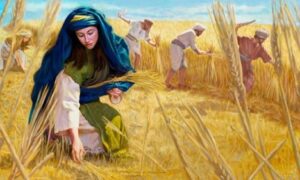 Ruth was a Moabite woman had come to Israel as the widow of an Israelite man. She had returned with her mother-in-law, Naomi, who had also lost her husband. They lived together as two widows just barely surviving. Ruth would go to the fields each day to glean food during the times of harvest. Boaz was a landowner where Ruth came to find grain. He knew of her situation and told his workers to leave plenty of grain for her to find. Boaz also offered her food with the other workers and encouraged her to work in the safety of his fields throughout the harvest.
Ruth was a Moabite woman had come to Israel as the widow of an Israelite man. She had returned with her mother-in-law, Naomi, who had also lost her husband. They lived together as two widows just barely surviving. Ruth would go to the fields each day to glean food during the times of harvest. Boaz was a landowner where Ruth came to find grain. He knew of her situation and told his workers to leave plenty of grain for her to find. Boaz also offered her food with the other workers and encouraged her to work in the safety of his fields throughout the harvest.
Naomi noticed that Boaz had interest in Ruth and that he was also a close relative. According to Jewish law, Boaz had the right to marry Ruth after the death of her husband. Naomi encouraged Ruth to go to Boaz in the evening and present herself willing to accept a marriage proposal from him. When Ruth did this, Boaz was pleased. However, he commented that there was one relative who was closer in line to marry Ruth than himself.
Boaz took it upon himself to meet with this relative the next day. He presented the opportunity for the relative to take Ruth as a wife. The relative turned down the offer because it would cause harm to his own family situation. Boaz then made a commitment in front of the town’s leaders that he would take Ruth as his wife. Boaz and Ruth were married and soon had a son named Obed. Naomi’s misfortune had turned to joy as she became a grandmother. Obed would later become the grandfather of King David, who would also serve as an ancestor of Jesus Christ.
(Matthew 1:5–6) – “Boaz the father of Obed, whose mother was Ruth, Obed the father of Jesse, and Jesse the father of King David.”
In the Old Testament Book, Ruth, chapter 4 is a story that shows how God often works through those who have endured tragic situations and then changes the lives of many others. Our God can and will work through the most unlikely means. Ruth was just a poor widow in a foreign land. Yet God used her to create the family line of both David and Jesus. This story shows that God is in control of everything that happens, even when we do not understand the events around us. It is a story of love.
Ideas to Explore
Read the entire story of Ruth, Naomi, and Boaz in Ruth Chapter 4. Have a discussion on the following:
- What type of love/affection was there between Ruth and Naomi?
- How do you think that Naomi’s faith in God influenced Ruth to go with Naomi into a foreign land rather than to stay where she would have been accepted?
- When Boaz first noticed Naomi and Ruth, he was generous. What type of love was he showing them?
- Boaz never took advantage of either of the two widows in this story and he followed the Jewish law. What can you tell about the character of Boaz?
Example of Historical Value of Love
Deborah Sampson was born on December 27, 1760 in Winnetuxet, later called Plympton, Massachusetts to Jonathan and Deborah Sampson. She was related to Governor William Bradford of the Plymouth Plantation. The oldest of three sisters and three brothers, her contributions to the American Revolution would make her our nation’s first female soldier.
When Deborah was about five years old, her father vanished. The family believed that he was lost at sea during a fishing trip, but it later it was learned that he had abandoned his wife and six young children to build a new life and family in Maine. Deborah’s mother, unable to provide for her children, placed them with other relatives and families, as was common for destitute parents of the time. Deborah was five when she first went to live her mother’s cousin, Ruth Fuller of Middle borough, Massachusetts. Ruth died when Deborah was eight. Deborah ended up living with Mary Prince Thatcher, an 80-year-old widow of a First Congregational Church minister. Mrs. Thatcher died around 1770 and the 10-year-old Deborah became an indentured servant in the household of Jeremiah Thomas of Middleborough, Massachusetts. This was quite a rough life for a young girl to have endured.
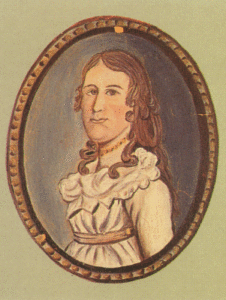 During her time with the Thomas family, she worked in their home and fields. During the winter when there was not much work to be done, she was allowed to attend school. When she was not in school, she would stay up after everyone had gone to bed and study the schoolbooks the Thomas boys brought home. At the Thomas’ home, she learned to cook, spin, weave, how to run farm equipment and how to shoot a musket. She would go along with the Thomas sons when they went hunting and learned to shoot just as good as they could. Deborah stood about 5 foot eight inches tall, was heavy boned, strong and of light complexion.
During her time with the Thomas family, she worked in their home and fields. During the winter when there was not much work to be done, she was allowed to attend school. When she was not in school, she would stay up after everyone had gone to bed and study the schoolbooks the Thomas boys brought home. At the Thomas’ home, she learned to cook, spin, weave, how to run farm equipment and how to shoot a musket. She would go along with the Thomas sons when they went hunting and learned to shoot just as good as they could. Deborah stood about 5 foot eight inches tall, was heavy boned, strong and of light complexion.
Deacon Thomas not only taught his children about God but also how to use money wisely. He gave every child some lambs to raise and sell and he included Deborah. She was incredibly wise with her lambs, selling them for the highest price she could get. She kept her money hidden in a handkerchief.
Deborah was only ten years old when the Boston Massacre happened in 1770 and thirteen years old in 1773 at the time of the Boston Tea Party. The citizens of Boston refused to pay for the tea dumped in the ocean and in 1774 King George III issued the Intolerable Acts. When the people of Boston started talking about how they would starve under King George’s laws, Deborah planted a garden for herself and the Thomas family.
On December 16, 1775, the official start of the Revolutionary War, Deborah decided to fight in the War. She was sixteen years old when the Declaration of Independence was signed in 1776. The men and boys from all around were joining the militia or the Continental Army led by General George Washington. By the time Deborah was eighteen, the United States was losing many battles and France had just decided to join with the Continental Army.
After her indenture ended in 1778, Deborah supported herself by teaching school in the summers and working as a weaver in the winter. She also used her skills at light woodworking to sell goods like spools, pie crimpers, milking stools, and other items door-to-door.
She left the Thomas’ home in 1779 and became a teacher in a Middleborough public school. She still thought about joining the Continental Army but did not really know how she could do it. Then in the winter of 1780, Mr. Thomas came for a visit and told her about two of his sons being killed in Virginia when they were fighting with Marquis de Lafayette. She had grown close to all the Thomas boys, and this is when she committed to serving with the Continentals. It would be then that the affectionate bond between Deborah and her adopted brothers provided the impetus to fight in the American Revolution.
Deborah had taken a room from Mr. and Mrs. Benjamin Leonard and towards the end of 1781, she decided she would try to enlist in the Continental Army. Taking some clothes from Samuel, the son of Mr. and Mrs. Leonard, she tested her disguise by going to visit her mother. When her mother did not recognize her, Deborah Sampson knew she could sneak into the Continental Army.
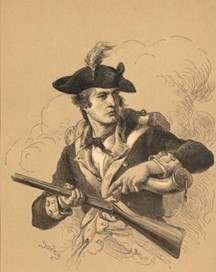 Finally, on May 20, 1782, at the age of twenty-one Deborah Sampson enlisted in the Fourth Massachusetts Regiment of the Continental Army at Bellingham, Massachusetts, as Robert Shurtleff, which was the name of her oldest brother who had died at the age of eight. Deborah was almost immediately detected when noticed she held the quill with her finger in that funny position, like a female. No one else seemed to notice and Deborah Sampson, otherwise known as Robert Shurtleff, was now a soldier with the Continental Army for the next three years of her enlistment. Three days later she was officially part of Captain George Webb’s company. She was soon excommunicated from the Baptist Church, because the people of Middleborough had heard she was dressing as a man and serving in the Army.
Finally, on May 20, 1782, at the age of twenty-one Deborah Sampson enlisted in the Fourth Massachusetts Regiment of the Continental Army at Bellingham, Massachusetts, as Robert Shurtleff, which was the name of her oldest brother who had died at the age of eight. Deborah was almost immediately detected when noticed she held the quill with her finger in that funny position, like a female. No one else seemed to notice and Deborah Sampson, otherwise known as Robert Shurtleff, was now a soldier with the Continental Army for the next three years of her enlistment. Three days later she was officially part of Captain George Webb’s company. She was soon excommunicated from the Baptist Church, because the people of Middleborough had heard she was dressing as a man and serving in the Army.
Her first narrow escape from discovery was when she was altering her poorly fitting uniform and was observed to be particularly good with a needle. She explained it away by stating there were no girls in her family, so as a youngest she had to learn how to sew.
Her regiment was sent to West Point, New York. During a scouting party to try to find food for her regiment, she was shot in the leg by Loyalists who caught her stealing from a cave near Tarrytown. To maintain her disguise, Deborah refused to see a doctor and took care of her own wound.
She was at West Point for eighteen months and fought in several battles. Deborah was injured two more times. Once near Tarrytown, her head was cut with a sword and then again near Eastchester. This time she was hit in the thigh by a musket ball and was carried to the hospital. But, once there, she showed the surgeon the lesser wound to her head, and he released her. She tried to dig the musket ball out of her thigh with her pen knife! Failing that, she nursed the wound as best she could. But, having left the ball in the leg was to cause her trouble for the rest of her life. She again refused to be treated by a doctor and causing her injuries not to heal completely.
It was not until she came down with a “malignant fever,” which was being passed around the soldiers, that she was forced to see a doctor at a hospital in Philadelphia. Dr. Binney examined her and discovered she was not a man. He did not tell anyone but took her to his own home where she could get better care. Once she was well again, Dr. Binney met with her commanding officer.
Deborah Sampson knew right away that Dr. Binney had told her commanding officers, but on October 25, 1783, almost two months after the Peace Treaty of Paris was signed, she went to deliver the letter to General Washington. He was genuinely nice and did not make it harder on her than it was already. He handed her papers that honorably discharged her from the Army with some money so she could get home. He also gave her a note which gave her some of his good advice.
In 1784 she married Benjamin Gannett, a farmer, and they had three children, Earl, Mary, and Patience. On January 20, 1792, the Massachusetts General Court ordered that she be paid 34 pounds for her service in the United States Army. In the order, the Court said: she “did actually perform the duty of a soldier.” They said, “Deborah exhibited an extraordinary instance of female heroism, by discharging the duties of a faithful, gallant soldier, and at the same time preserving the virtue and chastity of her sex unsuspected and unblemished and was discharged from the service with a fair and honorable character….” Later, in 1804, Paul Revere sent a letter to Congress telling them she should receive more money for her duties in the War. She then received a U.S. pension of four dollars per month. She also received a land grant for her military services as a Revolutionary Soldier.
In 1802, Sampson started traveling around the New England states talking about her experiences in the United State Military, always wearing her military uniform. She received a letter from George Washington inviting Robert Shurtliffe to visit Washington. In her travels, she lectured in Massachusetts, Rhode Island, and New York and was perhaps America’s first women lecturer. Deborah Sampson Gannett died at the age of sixty-six on April 29, 1827 in Sharon, Massachusetts. On her tombstone is inscribed “Deborah wife of Benjamin Gannett, died April 29, 1827, aged 68 years“. On the reverse side of the stone it reads “Deborah Sampson Gannett, Robert Shurtleff, The Female Soldier Service 1781-1783.”
Ideas to Explore
The life and times of an American Revolutionary Soldier were extremely difficult. Cold, starvation and disease were common. The weaponry of war was brutal and difficult to use. Wounds of any kind were life-threatening due to infection. There are two activities that would help to understand this:
- Visit a medical museum in your area where the realities explained above can be seen.
- Contact the National Muzzle Loaders Rifle Association (NMLRA) and find a local member that can come and talk to your group. If permitted, have the students see what the round lead projectiles were and discuss how painful it must have been for Deborah Sampson to try to remove one from her leg.
- Contact a local gun club and arrange to have each student learn about the “Brown Bess,” the rifle of the American Revolution. See if you can have each person safely shoot a flintlock. Here they will understand that rain, snow rendered the flintlocks useless.
Example of Historical Value of Love Occurring in Florida
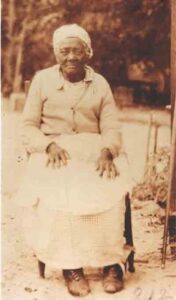 Esther Napoleon Lottery Bartley, known as Aunt Easter to family and friends, began her life as a slave born at the White Oak plantation under the ownership of Zephaniah Kingsley. The daughter of Carpenter Bonafi and his wife Mary, she was born around 1823 and died on January 3, 1931. The exact date of her birth is not known but it is estimated to have been approximately 108 at her death.
Esther Napoleon Lottery Bartley, known as Aunt Easter to family and friends, began her life as a slave born at the White Oak plantation under the ownership of Zephaniah Kingsley. The daughter of Carpenter Bonafi and his wife Mary, she was born around 1823 and died on January 3, 1931. The exact date of her birth is not known but it is estimated to have been approximately 108 at her death.
In an 1844 assessment of Zephaniah Kingsley’s personal property, Esther and her family were appraised at a price of $4,620.00, but no other record exists regarding her early years at White Oak plantation or the Ft. George Island plantation. What is known definitively is that she and her family were sold to John Sammis’s San Jose Plantation in 1848.
Esther was known to have married a fellow slave at White Oak when she was young. Her husband, Squash or Quash Lottery, was listed as the head of the household in an 1870 census record. They had four children named Anna, Ruth, Sallie, and Antoinette. A later census in 1880 listed Esther as the head of the household, which would imply that Quash had passed away.
Purchased by John Pratt in 1860 at a New Orleans slave auction, Esther and her family were relocated to Bellevue where they spent nearly the entire duration of the Civil War. During that time, Esther became close to her new mistress and performed a near miracle for her and her family. Mrs. Pratt was forced to flee from her home suddenly and requested of Esther that she hide her valuables and protect her children from detection. Esther hid the items well and after the war they were reacquired by Mrs. Pratt. Esther “hid” the children by a clever piece of trickery where she marched them right up to the army’s path and then let all the world know how excited they were to view the victorious army, making it seem they were there for no other purpose. The ruse worked and as a reward, Esther and her family were given the means to travel back to Jacksonville after the war where they purchased property in Arlington from the Sammis family.
After Quash passed away, Esther remarried in 1882 to George Bartley. They had no children together but lived as a family until 1917 when George died leaving her a widow. By 1925, Esther had many grandchildren and great grandchildren. The remainder of her life is undocumented, but she was describe striking a “quaint old-time figure,” known for wearing a calico dress, apron, and a “spotless white bandana“, leaning on a stout walking staff for balance. She was known for her keen, quick intellect and exceptional memory, right up to her days as one of Jacksonville’s oldest citizens. After her death in 1931, she was buried in Arlington where she rests to this day.
Ester was chosen as our Floridian historical example of love because she had every reason to hate but chose to live, endure, and love. In her simple way, despite the injustice of slavery, Ester prospered. It is what God calls each of us to do.
Ideas to Explore
 During the eighteenth and nineteenth centuries, many people came to Florida. Some, like Zephaniah Kingsley, sought to make their fortunes by obtaining land and establishing plantations. Others were forced to come to Florida to work on those plantations, their labor providing wealth to the people who owned them. Some of the enslaved would later become free landowners, struggling to keep their footing in a dangerous time of shifting alliances and politics. All these people played a part in the history of Kingsley Plantation. The Timucuan Preserve and Kingsley Plantation offer kayak trails through pristine marshes, fascinating historic sites, a wide variety of eco-systems from pine flatwoods to sandy beaches. It is part of the National Park System of the United States and located at 12713 Fort Caroline Road, Jacksonville, FL 32225.2https://www.nps.gov/timu/learn/historyculture/stories-of-the-enslaved.htm
During the eighteenth and nineteenth centuries, many people came to Florida. Some, like Zephaniah Kingsley, sought to make their fortunes by obtaining land and establishing plantations. Others were forced to come to Florida to work on those plantations, their labor providing wealth to the people who owned them. Some of the enslaved would later become free landowners, struggling to keep their footing in a dangerous time of shifting alliances and politics. All these people played a part in the history of Kingsley Plantation. The Timucuan Preserve and Kingsley Plantation offer kayak trails through pristine marshes, fascinating historic sites, a wide variety of eco-systems from pine flatwoods to sandy beaches. It is part of the National Park System of the United States and located at 12713 Fort Caroline Road, Jacksonville, FL 32225.2https://www.nps.gov/timu/learn/historyculture/stories-of-the-enslaved.htm
Practicing Acts of Value
The three stories that are part of the study of Love may seem strange. We find Ruth, a widow in a foreign land, gleaning grain to survive with her mother-in-law, Naomi. Ruth still lived a Godly and loving life. Deborah Sampson, who was abandoned as a child, indentured through most of her youth, was willing to die for her country in honor of her “adopted family” whom she loved. We end with Ester, treated as property most of her life, working hard, living an honest life. Ester did not use excuses but left this world with children, grandchildren, and great grandchildren whom she loved. No wonder God kept her around for 108 years. The challenge with the virtue of love is to learn how it is passed on, generation after generation, even during the hardest of times? Love is no different than a candle’s flame, it can be passed on to brighten our world.
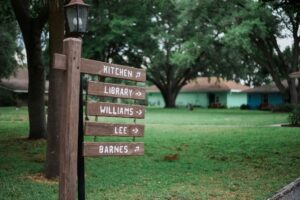 Located in Orlando Florida is a place called the Edgewood Children’s Ranch. Since 1966, the goal of Edgewood Children’s Ranch has been to help at-risk children and their families find hope. Their mission began when Orange County Juvenile Court Judge D. Arthur Yergey sought an option other than juvenile detention or confinement for young boys with disruptive behaviors. Judge Yergey’s vision coincided with the passion of John W. “Jack” Lynd whose years of working with troubled children led him to a similar vision to establish a faith-based home and school where young people could safely heal and change the direction their lives are heading.
Located in Orlando Florida is a place called the Edgewood Children’s Ranch. Since 1966, the goal of Edgewood Children’s Ranch has been to help at-risk children and their families find hope. Their mission began when Orange County Juvenile Court Judge D. Arthur Yergey sought an option other than juvenile detention or confinement for young boys with disruptive behaviors. Judge Yergey’s vision coincided with the passion of John W. “Jack” Lynd whose years of working with troubled children led him to a similar vision to establish a faith-based home and school where young people could safely heal and change the direction their lives are heading.
Edgewood began in a small house with two boys and a lot of faith and prayer. Dr. Jack Lynd and those boys prayed for their first meal because there was none at the time and God provided. Since 1966, their program has grown from helping two boys in a small house to being able to help up to 50 children and their families find hope for a better future.
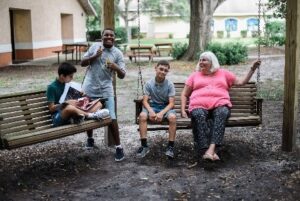 Children live onsite within group housing and attend school each day. Education is tailored to “catch up” and fill gaps that were formed during their troubled times. Children can stay and receive a high school diploma at Edgewood and, when appropriate, assistance for further education. Their parents come weekly for counseling and children return to their families for holidays and summer breaks.
Children live onsite within group housing and attend school each day. Education is tailored to “catch up” and fill gaps that were formed during their troubled times. Children can stay and receive a high school diploma at Edgewood and, when appropriate, assistance for further education. Their parents come weekly for counseling and children return to their families for holidays and summer breaks.
The approximately 100-acre site and numerous buildings are perfect for volunteers to clean, repair and paint. Donations can be collected and taken to their thrift store. Edgewood encourages the collection of food; the kids eat every day. They also appreciate help raising funds. Edgewood is faith-based and as a result, primarily operates through private funding. There are tutoring opportunities to help Edgewood children with their classwork. Consider setting up a workday and make a “loving difference” in our community.
- 1NIV New International Version Translations
- 2https://www.nps.gov/timu/learn/historyculture/stories-of-the-enslaved.htm

